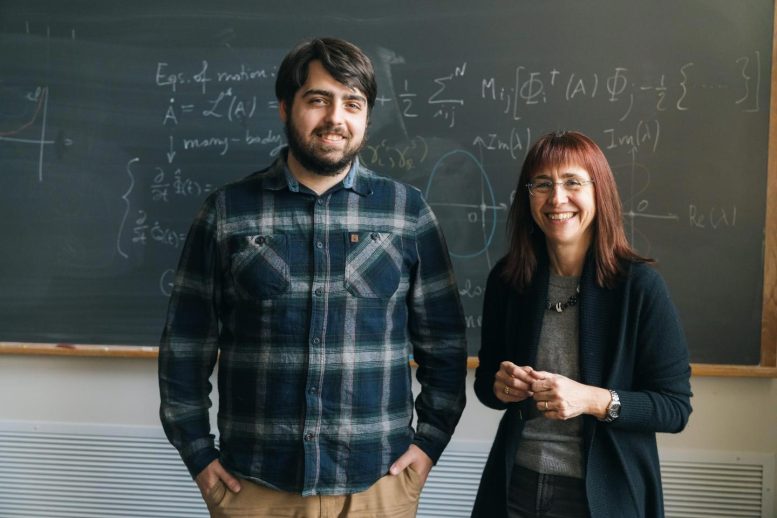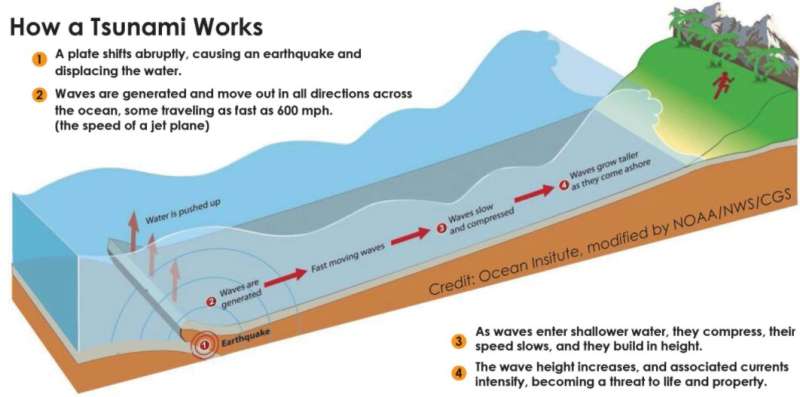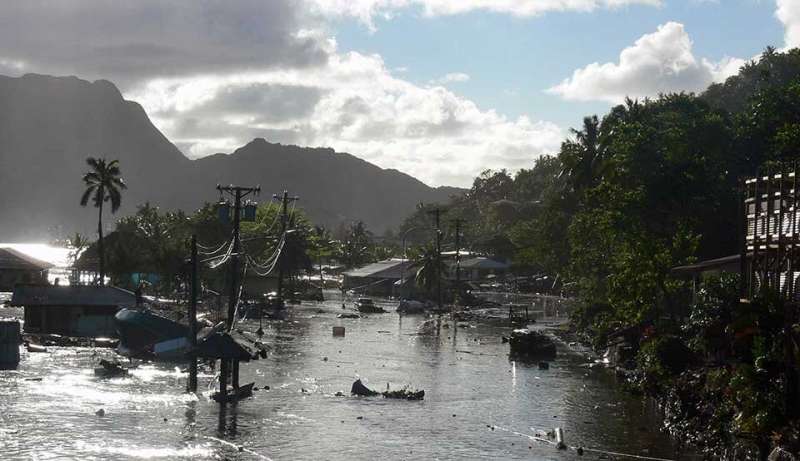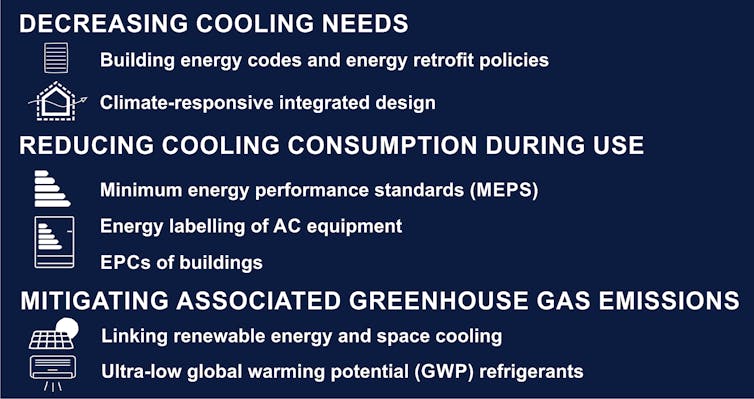Discovery of 'split' photon provides a new way to see light

Nearly a century after Italian physicist Ettore Majorana laid the groundwork for the discovery that electrons could be divided into halves, researchers predict that split photons may also exist, according to a study from Dartmouth and SUNY Polytechnic Institute researchers.
The finding that the building blocks of light can exist in a previously-unimaginable split form advances the fundamental understanding of light and how it behaves.
The theoretical discovery of the split photon—known as a "Majorana boson"—was published in Physical Review Letters.
"This is a major paradigm change of how we understand light in a way that was not believed to be possible," said Lorenza Viola, the James Frank Family Professor of Physics at Dartmouth and senior researcher on the study. "Not only did we find a new physical entity, but it was one that nobody believed could exist."
Similar to how liquid water can change into ice or vapor under specific conditions, the research indicates that light can also exist in a different phase—one where photons appear as two distinct halves.
"Water is water regardless of its liquid or solid form. It just behaves differently depending on physical conditions," said Viola. "This is how we need to approach our understanding of light—like matter, it can exist in different phases."
Rather than pieces that can be physically pulled apart, the photon halves serve similar to the different sides of a coin. The two distinct parts make up a whole, yet they can be described and function as separate units.
"Every photon can be thought of as the sum of two distinct halves," said Vincent Flynn, a Ph.D. candidate at Dartmouth and first author of the paper. "We were able to identify conditions for isolating these halves from one another."
The research is based on the fundamentals of physics.
Particles come in two different types: fermions and bosons. Fermions, such as electrons, tend to be solitary, avoiding each other at all costs. Bosons, such as photons, tend to bunch together. Thus, it was natural for researchers to assume that splitting bosons would be an insurmountable task.
The Dartmouth theory relies on energy-leaking, dissipating cavities that are coupled together and filled with quantum packets of light. The research predicts that particle halves appear at the edges of such a synthetic platform: The Majorana boson was discovered.
"Our discovery provides the first hint that a previously unknown, topological phase of light and matter which hosts Majorana bosons may exist," said Flynn.
Credit: LaDarius Dennison / Dartmouth College
The theoretical finding builds on the prediction in 1937 of the existence of neutral, electron-like particles known as Majorana fermions. In 2001, researchers suggested a specific process for how electrons could actually be halved in certain superconductors. But the photon had remained indivisible until now.
According to the research team, Majorana bosons can be viewed as distant relatives to Majorana fermions.
"Fermions and bosons are as different as two things can be in physics," said Emilio Cobanera, assistant professor of physics at SUNY Polytechnic Institute, and co-author of the study. "In effect, the particles are distorted images of each other. The existence of the Majorana fermions was our main clue that the Majorana boson was hiding somewhere in the funhouse mirror."
Confirmation of the Majorana boson would still require a laboratory experiment that observes the photon halves. Unlike the massive structures built to detect the renowned Higgs boson, an experiment to detect photon halves could be done on a tabletop. Such an experiment could utilize existing or near-term technologies.
The team found that Majorana bosons are robust against experimental imperfections and identifiable by distinct signatures. Although it is hard to predict how the findings may be applied, those characteristics could support the development of new types of quantum information processors, optical sensors, and light amplifiers. The research also points the way toward uncovering a new, exotic phase of matter and light.
"In order to make this discovery we had to challenge long-held beliefs and really think outside the box," said Viola. "We have split something previously thought to be unsplittable, and we'll never look at light the same way."
Scientists discover particles similar to Majorana fermions
More information: Vincent P. Flynn et al, Topology by Dissipation: Majorana Bosons in Metastable Quadratic Markovian Dynamics, Physical Review Letters (2021). DOI: 10.1103/PhysRevLett.127.245701
Journal information: Physical Review Letters
Provided by Dartmouth College
“Split” Photon Provides New Way To See Light – Predicts Existence of Previously-Unimaginable Particle

The finding of the Majorana boson demonstrates that photons can be “split” into halves. Credit: Animation by LaDarius Dennison
Research predicts the existence of a previously-unimaginable particle.
When Italian physicist Ettore Majorana suggested that electrons could be split into halves nearly a century ago, the revolutionary idea was largely underappreciated. It now serves as a cornerstone of physics.
Leveraging the same curiosity as Majorana, researchers from Dartmouth’s Viola Research Group are predicting that split photons may also exist.
“This is a major paradigm change of how we understand light in a way that was not believed to be possible,” says Lorenza Viola, the James Frank Family Professor of Physics. “Not only did we find a new physical entity, but it was one that nobody believed could exist.”
The theoretical discovery of the split photon – known as a “Majorana boson” – advances the fundamental understanding of light and how it behaves. Research describing the discovery was published this month in Physical Review Letters.

From left, Vincent Flynn, Guarini ’22, of the Viola Research Group, and Lorenza Viola, the James Frank Family Professor of Physics. Credit: Photo by Eli Burakian ’00
“Every photon can be thought of as the sum of two distinct halves,” says Vincent Flynn, Guarini ’22, the lead author of the paper. “We were able to identify conditions for isolating these halves from one another.”
Similar to how liquid water can change into ice or vapor under specific conditions, the research indicates that light can also exist in a different phase – one where photons appear as two distinct halves.
“Water is water regardless of its liquid or solid form. It just behaves differently depending on physical conditions,” said Viola. “This is how we need to approach our understanding of light—like matter, it can exist in different phases.”
“We have split something previously thought to be unsplittable, and we’ll never look at light the same way.”
— Lorenza Viola, the James Frank Family Professor of Physics
Rather than pieces that can be physically pulled apart, the photon halves are similar to the two sides of a coin. The two distinct parts make up a whole, yet they can be described and function as separate units.
The theory, co-authored by Emilio Cobanera, a visiting assistant professor of physics and astronomy, was developed in Wilder Hall, the same building that housed the laboratory where landmark research in the early 1900s measured the radiation pressure of light.
“As an early career scientist, it’s incredibly rewarding to build off the ideas of giants like Majorana and to be able to do so in a department with such deep historical connection to the physics of light,” says Flynn.
The new theory relies on energy-leaking cavities filled with quantum packets of light and predicts that particle halves appear at the edges of such a synthetic platform.
A laboratory experiment is still required to confirm that photons can exist in this previously-unimaginable split form. Unlike the massive structures built to detect the renowned Higgs boson, a test to detect photon halves could be done on a tabletop using existing or near-term technology.
According to the research team, the research points the way toward uncovering new, exotic phases of matter and light. It is hard to predict how the findings may be applied, but the Majorana boson could support quantum computing, optical sensors, and light amplifiers.
“In order to make this discovery we had to challenge long-held beliefs and really think outside the box,” says Viola. “We have split something previously thought to be unsplittable, and we’ll never look at light the same way.”
For more on this research, see New Research Predicts the Existence of a Previously-Unimaginable Particle.
Reference: “Topology by Dissipation: Majorana Bosons in Metastable Quadratic Markovian Dynamics” by Vincent P. Flynn, Emilio Cobanera and Lorenza Viola, 10 December 2021, Physical Review Letters.
DOI: 10.1103/PhysRevLett.127.245701








 We’ve identified three main ways to reduce the environmental impact of UK cooling demand.
We’ve identified three main ways to reduce the environmental impact of UK cooling demand.
